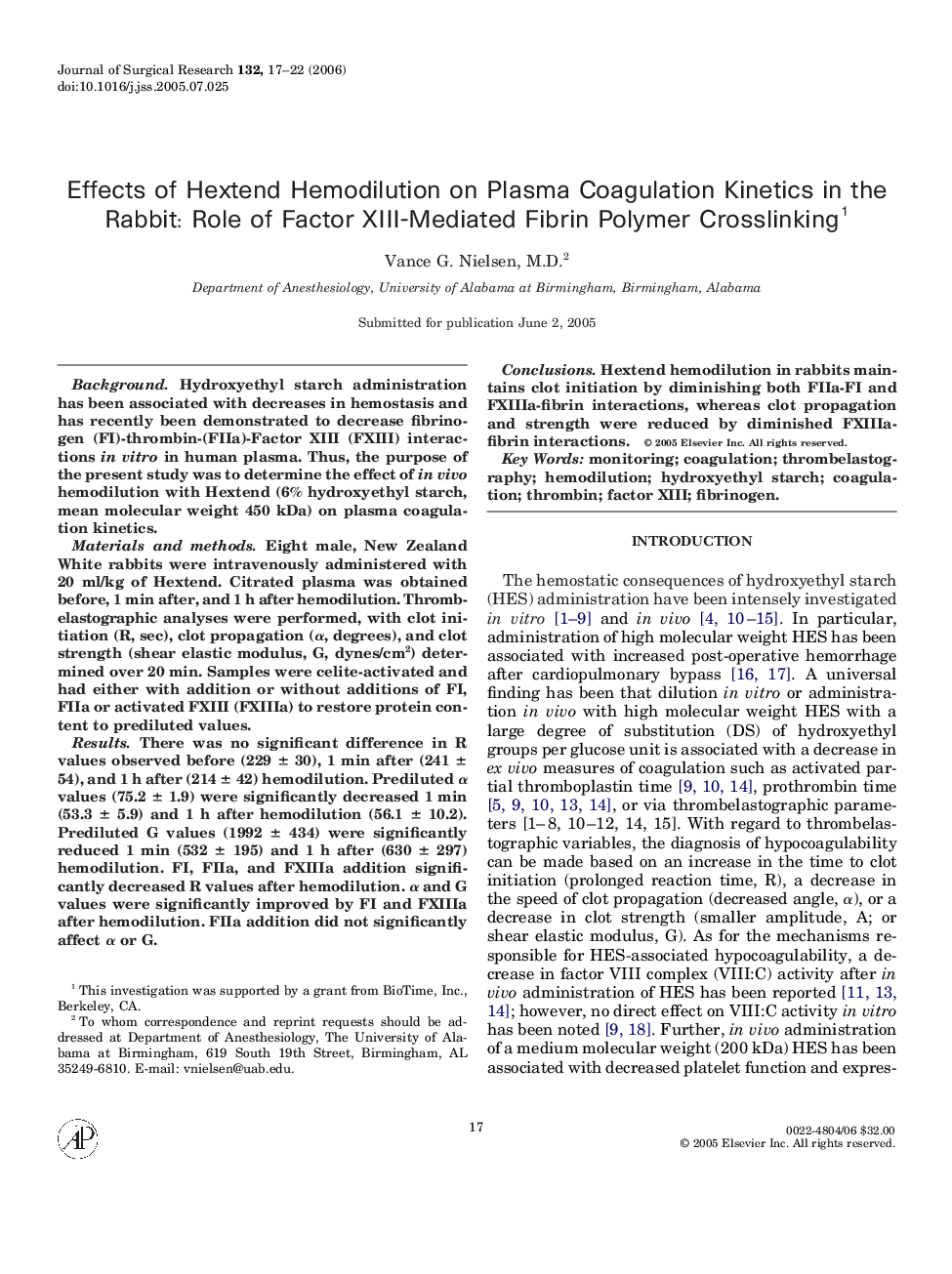| Article ID | Journal | Published Year | Pages | File Type |
|---|---|---|---|---|
| 4305170 | Journal of Surgical Research | 2006 | 6 Pages |
BackgroundHydroxyethyl starch administration has been associated with decreases in hemostasis and has recently been demonstrated to decrease fibrinogen (FI)-thrombin-(FIIa)-Factor XIII (FXIII) interactions in vitro in human plasma. Thus, the purpose of the present study was to determine the effect of in vivo hemodilution with Hextend (6% hydroxyethyl starch, mean molecular weight 450 kDa) on plasma coagulation kinetics.Materials and methodsEight male, New Zealand White rabbits were intravenously administered with 20 ml/kg of Hextend. Citrated plasma was obtained before, 1 min after, and 1 h after hemodilution. Thrombelastographic analyses were performed, with clot initiation (R, sec), clot propagation (α, degrees), and clot strength (shear elastic modulus, G, dynes/cm2) determined over 20 min. Samples were celite-activated and had either with addition or without additions of FI, FIIa or activated FXIII (FXIIIa) to restore protein content to prediluted values.ResultsThere was no significant difference in R values observed before (229 ± 30), 1 min after (241 ± 54), and 1 h after (214 ± 42) hemodilution. Prediluted α values (75.2 ± 1.9) were significantly decreased 1 min (53.3 ± 5.9) and 1 h after hemodilution (56.1 ± 10.2). Prediluted G values (1992 ± 434) were significantly reduced 1 min (532 ± 195) and 1 h after (630 ± 297) hemodilution. FI, FIIa, and FXIIIa addition significantly decreased R values after hemodilution. α and G values were significantly improved by FI and FXIIIa after hemodilution. FIIa addition did not significantly affect α or G.ConclusionsHextend hemodilution in rabbits maintains clot initiation by diminishing both FIIa-FI and FXIIIa-fibrin interactions, whereas clot propagation and strength were reduced by diminished FXIIIa-fibrin interactions.
